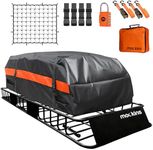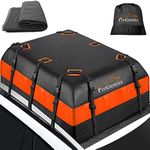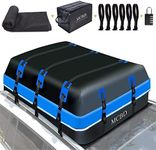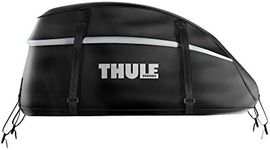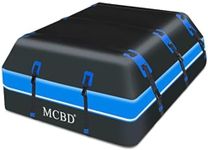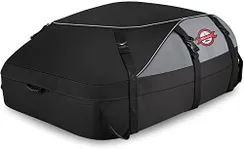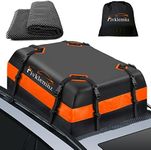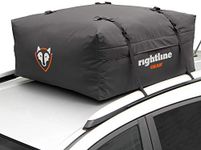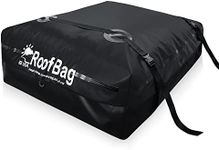Buying Guide for the Best Roof Bags
Choosing the right roof bag for your vehicle can make your travels much more convenient and stress-free. Roof bags are a great way to add extra storage space to your car, especially for road trips or vacations. When picking a roof bag, it's important to consider how much space you need, how easy it is to install, and how well it will protect your belongings from the elements. Understanding the key features will help you find a roof bag that fits your car and your travel needs perfectly.CapacityCapacity refers to how much the roof bag can hold, usually measured in liters or cubic feet. This is important because it determines how much extra luggage you can carry. Smaller bags (around 10-12 cubic feet) are suitable for solo travelers or couples with light packing, while medium bags (13-16 cubic feet) work well for small families. Larger bags (17-20+ cubic feet) are best for bigger groups or those who need to carry bulky items. To pick the right size, think about how many people are traveling and what kind of items you need to store. It's better to slightly overestimate your needs to avoid overstuffing the bag.
Material and Weather ResistanceThe material of the roof bag affects its durability and how well it protects your belongings from rain, wind, and sun. Most roof bags are made from heavy-duty, waterproof fabrics like PVC or coated nylon. Some are water-resistant rather than fully waterproof, which means they can handle light rain but not heavy downpours. If you expect to travel in wet or harsh weather, look for a bag that is fully waterproof with sealed seams and weatherproof zippers. For mostly fair-weather travel, a water-resistant bag may be enough.
Attachment SystemThe attachment system is how the roof bag secures to your car. Some bags are designed to work with roof racks, while others can be attached directly to the car's roof using straps that go through the doors. Roof rack-compatible bags tend to be more stable at high speeds, while universal bags offer more flexibility if you don't have a roof rack. When choosing, consider whether your car has a roof rack and how comfortable you are with installing straps. Make sure the attachment system is easy to use and holds the bag securely in place.
Ease of Installation and UseEase of installation refers to how simple it is to put the roof bag on your car and take it off. Some bags are lightweight and can be set up by one person, while others may require two people. Look for features like quick-release buckles, clear instructions, and user-friendly designs. If you plan to use the bag frequently or move it between vehicles, a bag that's easy to install and remove will save you time and hassle.
AerodynamicsAerodynamics describes how the shape of the roof bag affects wind resistance and noise while driving. More aerodynamic bags are lower and sleeker, which can help reduce wind noise and minimize the impact on your car's fuel efficiency. Boxy or tall bags may create more drag and noise, especially at highway speeds. If you plan to drive long distances or at high speeds, consider a more aerodynamic design for a quieter and more efficient ride.
Security FeaturesSecurity features include things like lockable zippers or straps that help prevent theft. Some roof bags come with built-in locks or can be secured with a padlock, while others rely on the car's doors or roof rack for security. If you plan to leave your car unattended with the bag on top, look for a bag with good security features to protect your belongings.
